Are you picturing a garden brimming with vivid hues and captivating scents? 🌸 Your quest concludes with the delightful peony plant! With their plentiful blooms and magical fragrances, peonies have captivated flower enthusiasts for centuries. Whether you’re a novice gardener or an experienced pro, these stunning plants offer the perfect blend of elegance and charm that can enhance any outdoor space. To truly uncover the marvels of growing peony plants,
it’s essential to understand their unique needs and preferences, including seasonal maintenance for peonies, proper watering, and light conditions.In this ultimate guide, we’ll explore everything you need to know about cultivating beautiful peony varieties, from selecting the right type to preparing the ideal growing conditions. 🌱 Did you know that different peony varieties thrive in various climates and soil types? This guide will provide you with valuable insights into choosing the best peonies for your garden, ensuring that you not only succeed but also enjoy the process of nurturing these exquisite flowers. So grab your gardening gloves and get ready to dive into the wonderful world of peonies! Your journey toward a vibrant, blooming paradise starts here!
Choosing the Right Peony Variety
When it comes to growing peony plants, selecting the right variety is crucial for a flourishing garden. There are three primary types of peonies to consider: herbaceous, tree, and intersectional. Herbaceous peonies are the most common, known for their lush foliage and vibrant blooms that die back to the ground each winter. Tree peonies, on the other hand, have woody stems and can grow quite tall, making them a striking focal point in any garden. Finally, intersectional peonies, a hybrid of the first two types, combine the best features of both, offering robust growth and stunning flowers that can last longer than their herbaceous counterparts.
When choosing a peony variety, there are several factors to keep in mind. Consider your local climate, as some peonies thrive better in colder regions while others prefer milder temperatures. Additionally, think about the space available in your garden — taller tree peonies might need more room to grow, while smaller herbaceous varieties could fit snugly into a tighter space. Lastly, take into account bloom time; if you want a continuous display of flowers throughout the season, selecting a mix of early, mid, and late-blooming varieties will ensure a succession of color and fragrance.
For those living in different climates, some popular peony varieties can serve as excellent choices. In cooler regions, ‘Festiva Maxima,’ with its large white blooms and hints of red, thrives beautifully. If you’re in a warmer area, consider ‘Bartzella,’ an intersectional peony known for its yellow flowers that can withstand heat better than traditional types. Always remember to research the specific needs of your chosen varieties, including soil preparation and drainage requirements, to give your peonies the best chance at success.
Ultimately, taking the time to select the right peony variety tailored to your garden’s conditions will set the stage for breathtaking blooms. With so many options available, you can create a stunning landscape that showcases these beloved flowers while enjoying the satisfaction that comes from nurturing them.
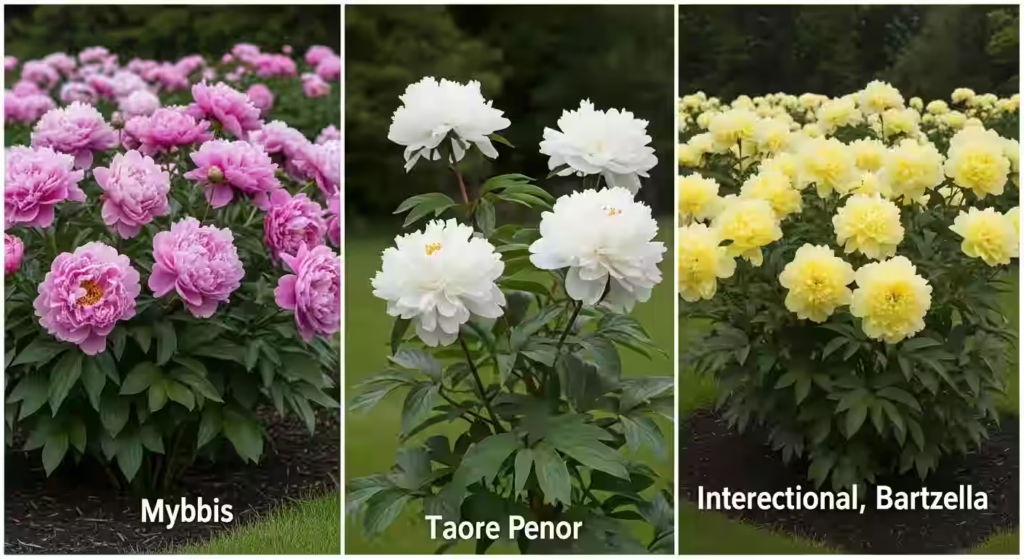
Preparing Your Garden for Peonies
When it comes to growing stunning peonies, selecting the right location in your garden is crucial. Peonies thrive in full sun, which means they need at least 6 hours of direct sunlight each day. Consider placing them in a spot that receives morning sun, as this helps to dry off any dew and prevents potential diseases. Avoid shaded areas near trees or tall structures, as they can compete for nutrients and block sunlight. For example, if you have a sunny corner of your yard that is sheltered from strong winds, this could be an ideal location for your peony plants.
Soil preparation is another key aspect of peony care tips. These beautiful blooms prefer well-drained soil that is rich in organic matter. Before planting, it’s wise to test your soil’s pH level; peonies thrive in slightly acidic to neutral soils (pH 6.0 to 7.0). If your soil is too acidic, you can add lime to raise the pH. Conversely, if it’s too alkaline, sulfur can help lower it. Additionally, amending your soil with compost or well-rotted manure not only improves drainage but also enriches the nutrient content necessary for healthy peony growth.
Spacing and planting depth are essential considerations that can significantly impact the success of your peony plants. When planting, ensure that you space your peonies about 3 to 4 feet apart to allow for their bushy growth. Plant them at a depth of approximately 2 inches below the soil surface; burying them too deep can hinder blooming. As a helpful tip, mark the planting spots with stakes or small flags so you can visualize the layout before digging holes. This will also prevent you from accidentally crowding them, which can lead to poor air circulation and increase the risk of diseases.
By taking these steps to prepare your garden, you’re setting the stage for a vibrant display of peonies in the coming seasons. With the right sunlight, well-prepared soil, and adequate spacing, your peonies will flourish, rewarding you with their lush blooms and delightful fragrance. So roll up your sleeves and get ready to enjoy the beauty of these perennial favorites!
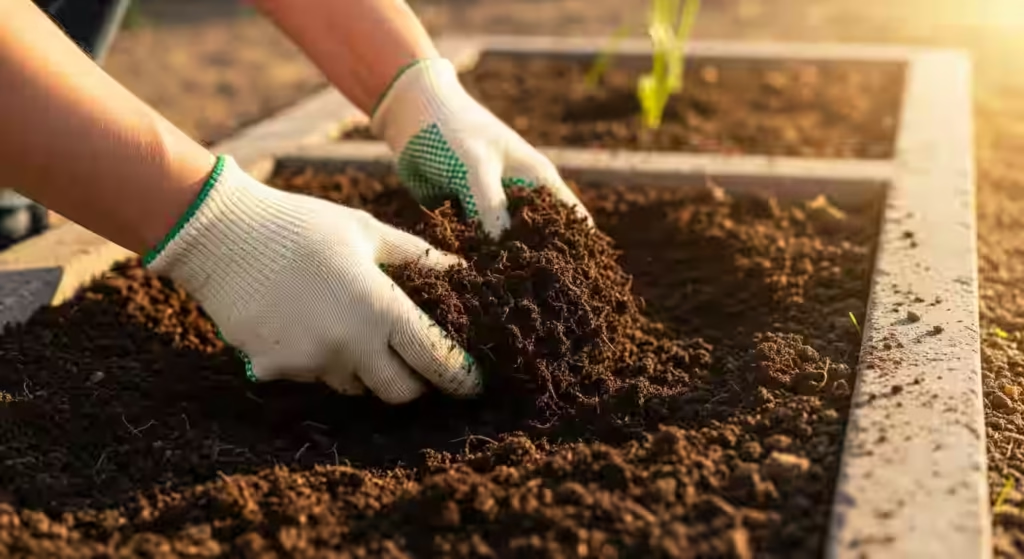
Planting Peony Bulbs
When it comes to planting peony bulbs, timing is crucial for ensuring optimal growth and vibrant blooms. The best time to plant peonies is in the fall, ideally between September and October. This allows the roots to establish themselves before the winter frost sets in. However, if you miss the fall window, early spring is also a viable option, just make sure to plant them as soon as the soil is workable.By planting at the right time, you’re setting the stage for a stunning display of flowers come late spring or early summer.
To successfully plant your peony bulbs, follow these step-by-step instructions for a thriving garden. First, dig a hole that is about 12-18 inches deep and wide enough to accommodate the roots without crowding. Place the bulb in the hole with the eyes (the small buds) facing upwards. Cover it with soil, ensuring that the top of the bulb is around 1-2 inches below the surface — this depth is essential for their growth. Water the area thoroughly after planting to help settle the soil and provide moisture. Finally, consider adding a layer of mulch to retain moisture and suppress weeds, which will aid in garden maintenance throughout the growing season.
While planting peonies may seem straightforward, there are common mistakes to avoid for the best results. One frequent error is planting too deeply; if you bury peony bulbs too far, they may struggle to push through the soil and bloom. Additionally, poor drainage can lead to rot, so ensure your planting site has well-draining soil — consider amending heavy clay with compost or sand if needed. Lastly, be cautious about overcrowding; peonies need space to grow and breathe, so follow recommended spacing guidelines to give each plant ample room to thrive. By steering clear of these pitfalls, you’ll be well on your way to growing beautiful peony plants that become the centerpiece of your garden!
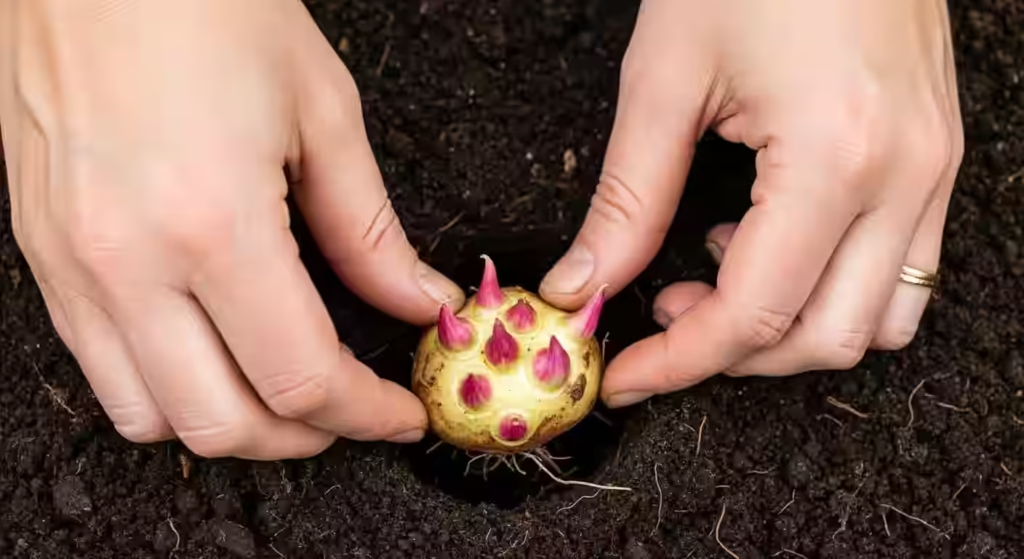
Caring for Your Peony Plants
Once you’ve successfully planted your peonies, the next crucial step is ensuring they receive the proper care to thrive. Watering is essential for peonies, especially during their initial growth phase. Ideally, peonies need about an inch of water per week, either from rainfall or supplemental watering. It’s best to water deeply but infrequently, allowing the soil to dry out slightly between watering sessions. This practice encourages deep root growth and helps prevent issues like root rot. Remember to water at the base of the plant rather than overhead to keep the leaves dry and reduce the risk of disease.
Fertilization also plays a vital role in nurturing your peony plants. A balanced fertilizer with a ratio of 10-10-10 (nitrogen, phosphorus, potassium) is ideal for robust blooms. Apply this fertilizer in early spring when new growth emerges and again after blooming has finished to support the plant’s energy reserves for next season. It’s important to avoid over-fertilizing, as too much nitrogen can result in lush foliage at the expense of flowers. Instead, consider organic options like compost or well-rotted manure, which enrich the soil without the risk of chemical burn.
Pruning is another key aspect of caring for peonies and should not be overlooked. After the blooming period ends, it’s essential to cut back spent blooms and any dead or yellowing foliage to promote healthy growth for the following year. Use clean, sharp pruning shears to make clean cuts just above a leaf node. For herbaceous peonies, you can cut them back to ground level in late fall or early spring before new growth begins. Tree peonies require different handling; remove dead wood and thin out branches to improve airflow and encourage light penetration. Regular pruning not only enhances the appearance of your plants but also contributes significantly to their overall health and vigor.
By following these caring guidelines, you will foster a thriving environment for your peonies, enabling them to flourish beautifully in your garden. As you learn more about caring for your plants, don’t hesitate to experiment with different methods — gardening is all about discovery!
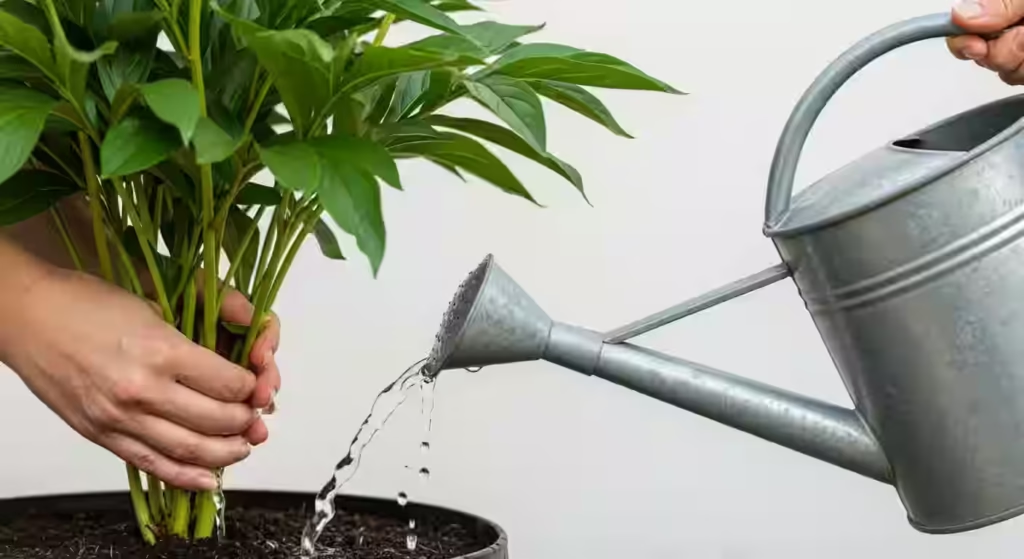
Pest and Disease Management
When growing peony plants, being aware of common pests and diseases is crucial for maintaining healthy blooms. Peonies can attract various pests, with aphids and spider mites being the most prevalent. Aphids are small, soft-bodied insects that cluster on the stems and underside of leaves, sucking out plant sap and potentially spreading diseases. Regularly inspecting your peonies for these pests can help catch infestations early. To prevent these nuisances, consider introducing beneficial insects like ladybugs to your garden, as they feast on aphids. Additionally, applying insecticidal soap can effectively manage these pests without harming beneficial insects.
Peonies can also be susceptible to diseases such as powdery mildew and botrytis blight. Powdery mildew appears as a white, powdery substance on leaves and can stunt plant growth if left untreated. To combat this, ensure proper spacing between plants to improve airflow and reduce humidity around your peonies. If you do notice powdery mildew, a simple solution of baking soda mixed with water can serve as a natural remedy. On the other hand, botrytis blight is characterized by brown spots on leaves and stems, often resulting from excessive moisture. Keeping the foliage dry and removing any affected plant material can help prevent this disease from taking hold.
In the ongoing debate of natural remedies versus chemical solutions, many gardeners find success with organic pest control for peonies. Using neem oil or diatomaceous earth can deter pests without introducing harsh chemicals into your garden. These natural alternatives not only protect your plants but also contribute to a healthier ecosystem overall. However, in cases of severe infestations or stubborn diseases, chemical treatments may be necessary. If you choose this route, always follow label instructions carefully to minimize potential harm to beneficial insects and the surrounding environment.
Ultimately, managing pests and diseases in your peony garden is about observation and timely intervention. By staying vigilant and employing both natural remedies and targeted treatments when needed, you can ensure that your peonies thrive and produce those stunning blooms you’ve been dreaming of! 🌸 Happy gardening!
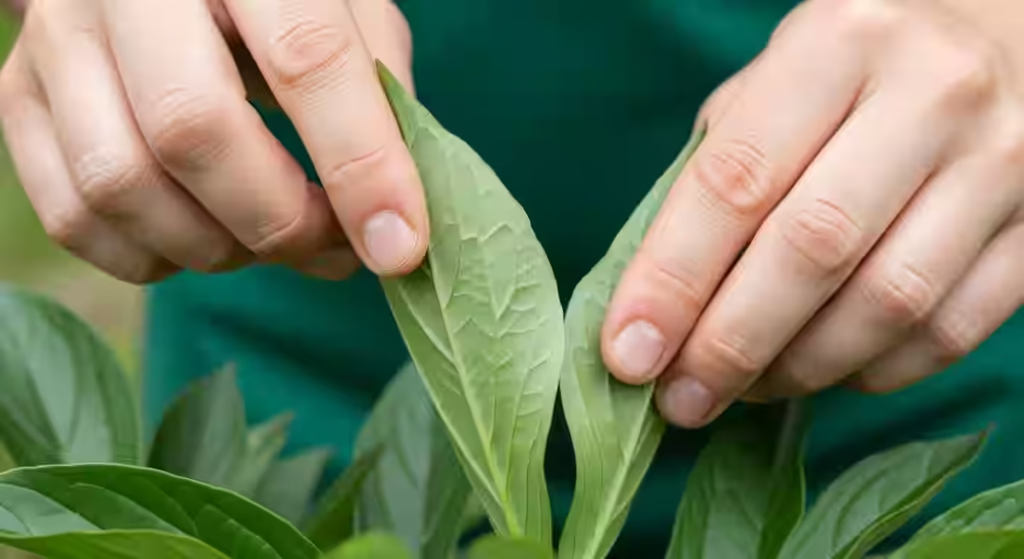
Peony Plant Support
As your peony plants grow, they may require some extra support to ensure they flourish beautifully. This is particularly true for taller varieties, which can become top-heavy and prone to flopping over, especially during rainy weather or when laden with blooms. Staking is a practical solution that helps maintain their upright posture and showcases their stunning flowers. You can use bamboo stakes, metal cages, or decorative trellises to provide the necessary support. When staking, be sure to insert the stakes early in the growing season to avoid damaging the roots later on.
Proper airflow around your peonies is essential for preventing peony diseases, such as powdery mildew and botrytis blight, which thrive in humid conditions. To facilitate good air circulation, space your plants adequately when planting; a distance of 2 to 3 feet apart is often recommended for most varieties. Additionally, keeping the area around the plants clear of debris and weeds helps reduce moisture retention and encourages healthy growth. Remember that peonies are hardy perennials, but they still benefit from a little extra care to keep them thriving.
Seasonal care plays a crucial role in the longevity of your peonies. As the blooming season comes to an end, consider removing spent flowers and any yellowing foliage to prevent disease and promote new growth for next year. In late fall, after the first frost, cut back the foliage to about 4-6 inches above the ground. This practice not only tidies up your garden but also protects the plant during winter dormancy. Applying a layer of mulch can help insulate the roots and retain moisture until spring arrives.
By ensuring your peonies are well-supported, receive adequate airflow, and are cared for throughout the seasons, you’ll set the stage for vibrant blooms year after year. Embrace these practices, and you’ll soon be rewarded with a flourishing garden filled with the rich colors and fragrant allure of your peonies!
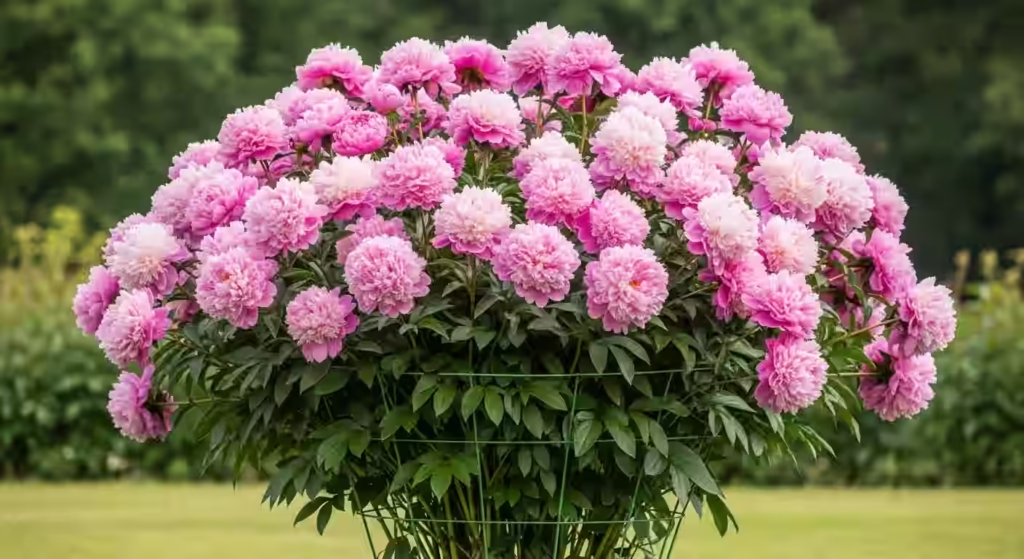
Enjoying Your Blooms
Once you’ve successfully grown stunning peony plants, it’s time to enjoy the fruits of your labor! Cutting and arranging peonies can be a delightful way to bring the beauty of your garden indoors. When cutting your peonies, aim for stems that are at least 12 inches long, ensuring they have ample foliage for photosynthesis. The best time to cut is in the morning when blooms are still closed but showing color; this allows them to open beautifully in a vase. Always use sharp, clean shears to make a clean cut, and consider cutting at an angle to maximize water uptake.
To prolong the vase life of your peonies, start by immediately placing them in lukewarm water after cutting. Remove any leaves that may sit below the waterline to prevent rot. Change the water every few days and add a floral preservative if available; this can help keep bacteria at bay and extend the life of your blooms. You might also consider lightly misting the petals with water occasionally, as peonies thrive in humid environments. By following these tips, you can enjoy your vibrant peonies for up to a week or more!
In addition to showcasing peonies in vases, think about how you can celebrate your garden’s beauty through home décor. Create stunning centerpieces using a mix of peonies and complementary flowers such as roses or hydrangeas. You can also display single stems in small bud vases throughout your home for a chic, minimalist look. For an outdoor celebration, consider arranging peonies alongside other garden plants in hanging baskets or window boxes, creating a vibrant view from both inside and outside your home.
Ultimately, growing peony plants not only enhances your garden but also allows you to bring that natural beauty indoors. Whether you’re arranging them for special occasions or simply enjoying their presence daily, peonies add a touch of elegance and joy to any space. So, don’t hesitate to cut those blooms and let their splendor brighten up your life!
Frequently Asked Questions
As you embark on your journey of growing stunning peonies, it’s natural to have questions, especially if you’re a novice gardener. One common concern is how much water peonies need. These beautiful plants thrive in well-drained soil and prefer consistent moisture without becoming waterlogged. A good rule of thumb is to water your peonies deeply once a week, ensuring that the soil remains moist but not soggy. Keep an eye on the weather — during particularly hot spells, you may need to increase your watering frequency to keep those lush blooms hydrated! 🌧️💧
Another frequent issue gardeners encounter is poor blooming. If your peonies aren’t flowering as expected, it could be due to several factors. Firstly, ensure that they are getting enough sunlight; peonies generally require at least six hours of direct sunlight each day to flourish. Additionally, check if you’ve planted them too deeply; peony eyes should be no more than 2 inches below the soil surface for optimal growth. If you notice yellowing leaves or stunted growth, it might also indicate a nutrient deficiency, so consider a balanced fertilizer during the growing season to provide extra nourishment.
For those eager to expand their knowledge, there are plenty of resources available! Books such as “Peonies: The Perfect Perennial” by A.P. Kauffman offer extensive insights into different varieties and care techniques. Online forums and gardening websites can also be invaluable for sharing experiences and troubleshooting specific issues with fellow flower enthusiasts. Don’t hesitate to reach out to local gardening clubs or extension services — they often host workshops and provide expert advice tailored to your region’s climate and soil conditions.
Remember, gardening is a learning experience filled with trial and error! Embrace each challenge as an opportunity to grow your skills and enjoy the beauty of your blooming peonies. With patience and practice, you’ll soon find yourself cultivating a vibrant garden that not only showcases these stunning flowers but also reflects your unique gardening journey.
Final Thoughts on Growing Beautiful Peony Plants
In conclusion, growing stunning peony plants can be a truly rewarding experience for both novice and experienced gardeners alike. By following the guidelines outlined in this guide — such as selecting the right variety, preparing your garden, and providing proper care — you can cultivate vibrant blooms that will enhance any outdoor space. Remember to explore different types of peonies and experiment with their placement to see what works best for your garden’s unique conditions. 🌸
As you embark on your gardening journey, don’t hesitate to embrace creativity and make adjustments along the way. The joy of cultivating peonies lies not only in their breathtaking beauty but also in the satisfaction of nurturing life and watching your efforts blossom. So grab your gardening tools, get your hands dirty, and enjoy the delightful process of growing these magnificent flowers! Happy gardening!





